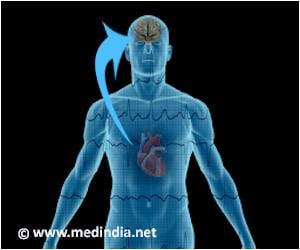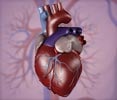Warfarin is facing competition, after being a standard treatment for atrial fibrillation for a long time, from new options in the anticoagulant drug marketplace like dabigatran.

Commenting on the study, Joseph S. Alpert, MD, Professor of Medicine, University of Arizona College of Medicine, Tucson, writes that "Given the much simpler clinical protocol associated with a NOAC, it is not surprising that the NOACs accounted for 62% of new anticoagulant prescriptions during that time period. Ease of use undoubtedly accounted for this rapid switch from warfarin to a NOAC."
In order to better understand NOAC adoption and prescription trend, researchers analyzed medical and prescription claims data from a large American medical insurance company. They identified patients with AF who were prescribed an oral anticoagulant from 2010-2013 and found that during that time period, NOACs accounted for 62% of new prescriptions, meaning that physicians are rapidly adopting NOACs as an acceptable alternative to warfarin, particularly among patients with lower CHADS2 (Congestive heart failure, Hypertension, Age >75 years, Diabetes mellitus, Stroke) scores and HAS-BLED (Hypertension, Abnormal renal/liver function, Stroke, Bleeding history or predisposition, Labile international normalized ratio, Elderly [Age >65 years], Drugs/alcohol concomitantly) scores.
While being prescribed with increasing frequency, the study determined that NOACs were less likely to be given to women and people in lower income areas. Researchers also identified that NOACs were most regularly prescribed to patients with lower CHADS2 and HAS-BLED scores, while warfarin was still being used for those with higher scores. Researchers note that this is significant because in the clinical trials conducted to approve NOACs, most patients had CHADS2 scores in the higher ranges.
"The greatest absolute benefit from novel anticoagulants has been shown in clinical trials to be among patients at highest baseline risk for stroke or systemic embolization, which is at odds with our observation of selection of seemingly lower-risk patients for these drugs," observes lead investigator Niteesh K. Choudhry, MD, PhD, Associate Professor of Medicine at Harvard Medical School and an Associate Physician in the Division of Pharmacoepidemiology and Pharmacoeconomics at Brigham and Women's Hospital, Boston. "Such a finding may reflect provider conservatism for new drug adoption, particularly given longitudinal experience with warfarin."
But these new drugs come at a price and high health care cost consequences. The data revealed that NOACs represented 98% of the total dollars spent on anticoagulants from 2010 to 2013. Specifically, over the first six months, the average combined patient and insurer cost associated with starting a NOAC was $900 greater than the costs of starting warfarin, meaning the burden for both insurance and patients is much higher with NOACs.
Advertisement
While the rapid adoption of NOACs is good news for patients and doctors who would like more AF medication choices, this study indicates that more information may be needed to fully understand the implications of rising NOAC prescriptions.
Advertisement
Dr. Alpert expects that the utilization of the NOACs will increase over time, cost will gradually become less of an issue, particularly once they become generic, and new protocols will be devised to minimize, but never eliminate, bleeding risk.
Source-Eurekalert












